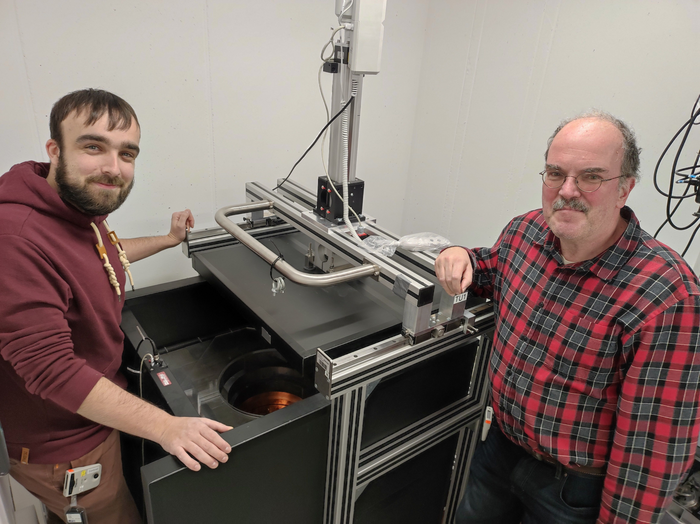What is dark matter? What are neutrinos all about? How do stars work and what was actually going on in the universe in the first minutes after the Big Bang? To answer these questions, you need very sensitive detectors and a lot of skill. Only a few laboratories in the world have been able to perform such sensitive measurements so far. Recently, however, an ultra-sensitive detector has been set up in Germany, which will enable researchers to find answers to these questions in the future.

Credit: Max Osswald
What is dark matter? What are neutrinos all about? How do stars work and what was actually going on in the universe in the first minutes after the Big Bang? To answer these questions, you need very sensitive detectors and a lot of skill. Only a few laboratories in the world have been able to perform such sensitive measurements so far. Recently, however, an ultra-sensitive detector has been set up in Germany, which will enable researchers to find answers to these questions in the future.
After long development work, researchers from the Institute for Nuclear and Particle Physics (Technische Universität Dresden) and the Institute for Radiation Physics (HZDR) have now put the setup into operation in the underground laboratory “Felsenkeller” Dresden. From now on, they will be able to analyze samples of substances and materials with a radioactivity in the range of 100 microbequerels, in other words, samples with 100 million times less radioactivity than is present in the human body. This puts the measurement setup in the Felsenkeller laboratory among the world’s most sensitive measuring instruments for radioactivity.
“If you want to study rare processes and low activities in physics, you basically need two things: on the one hand, a lot of patience – because the processes rarely take place – and on the other hand, an environment that is as low in radiation as possible so that the detector is not permanently disturbed by natural sources of radiation,” explains Steffen Turkat, TUD staff member at the Felsenkeller Laboratory.
To this end, the 45-meter-thick rock overburden in the tunnel of the former ice storage facility of the Dresden Felsenkeller brewery protects the detector from most of the cosmic radiation, but not from natural radioactivity from the environment. Therefore, the researchers had to protect the detector with a sophisticated setup based on low-radiation concrete walls, large amounts of lead and copper, and so-called veto detectors. This is the only way this highly sensitive setup can function and evaluate nuclear transitions from valuable samples.
“I am particularly pleased about the large number of unplanned inquiries from interested colleagues worldwide who would now like to use the detector. These requests quickly involve extremely valuable and rare samples that are scientifically very exciting but which cannot be analyzed with other detectors. A detector like this automatically generates new collaborations and networks with other fascinating fields,” explains Steffen Turkat.
Prof. Kai Zuber of Technische Universität Dresden is the scientific director of the Felsenkeller laboratory and is particularly looking forward to being able to pursue his own challenging research interests in physics beyond the Standard Model: “I am particularly interested in double beta decay and the search for charged lepton violation. Furthermore, my focus lies on the study of the half-lives of radionuclides. The new detector at Felsenkeller is excellently suited for that.”
Prof. Daniel Bemmerer, Technical Director of the Felsenkeller Laboratory and Group Leader for Nuclear Astrophysics at HZDR, is also excited about the new possibilities offered by the detector: “We can now perform activation measurements for nuclear fusion experiments at energies much closer to the actual energies and temperatures in our Sun than was previously possible. This also creates a new synergy for the Felsenkeller accelerator.”
In addition to the new detector, Germany’s deepest underground physics laboratory already has an ion accelerator in operation since 2019 to study the most important processes inside stars.
The detector was procured with funds from the German Research Foundation’s large-scale equipment program.
Original publication:
S. Turkat, D. Bemmerer, A. Boeltzig, A. R. Domula, J. Koch, T. Lossin, M. Osswald, K. Schmidt, K. Zuber, “A new ultra low-level HPGe activity counting setup in the Felsenkeller shallow-underground laboratory”, Astroparticle Physics, vol. 148, 102816 (2023).
DOI: 10.1016/j.astropartphys.2023.102816
DOI
10.1016/j.astropartphys.2023.102816




